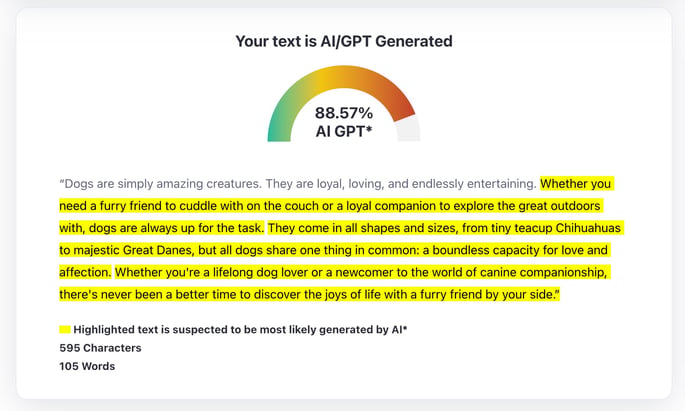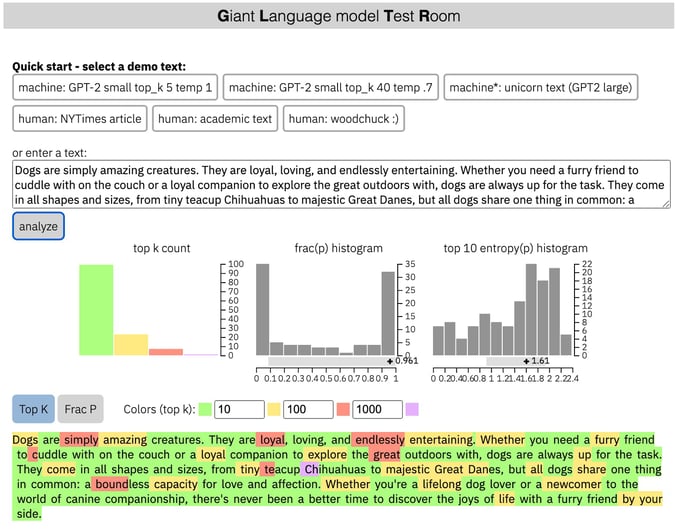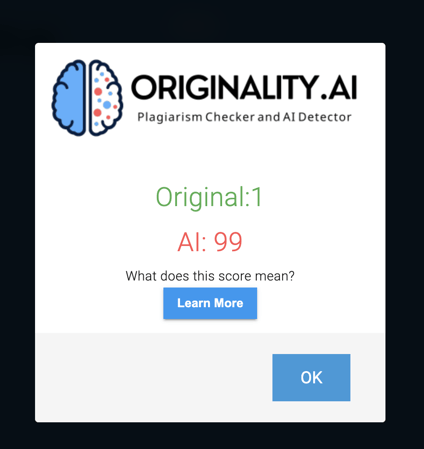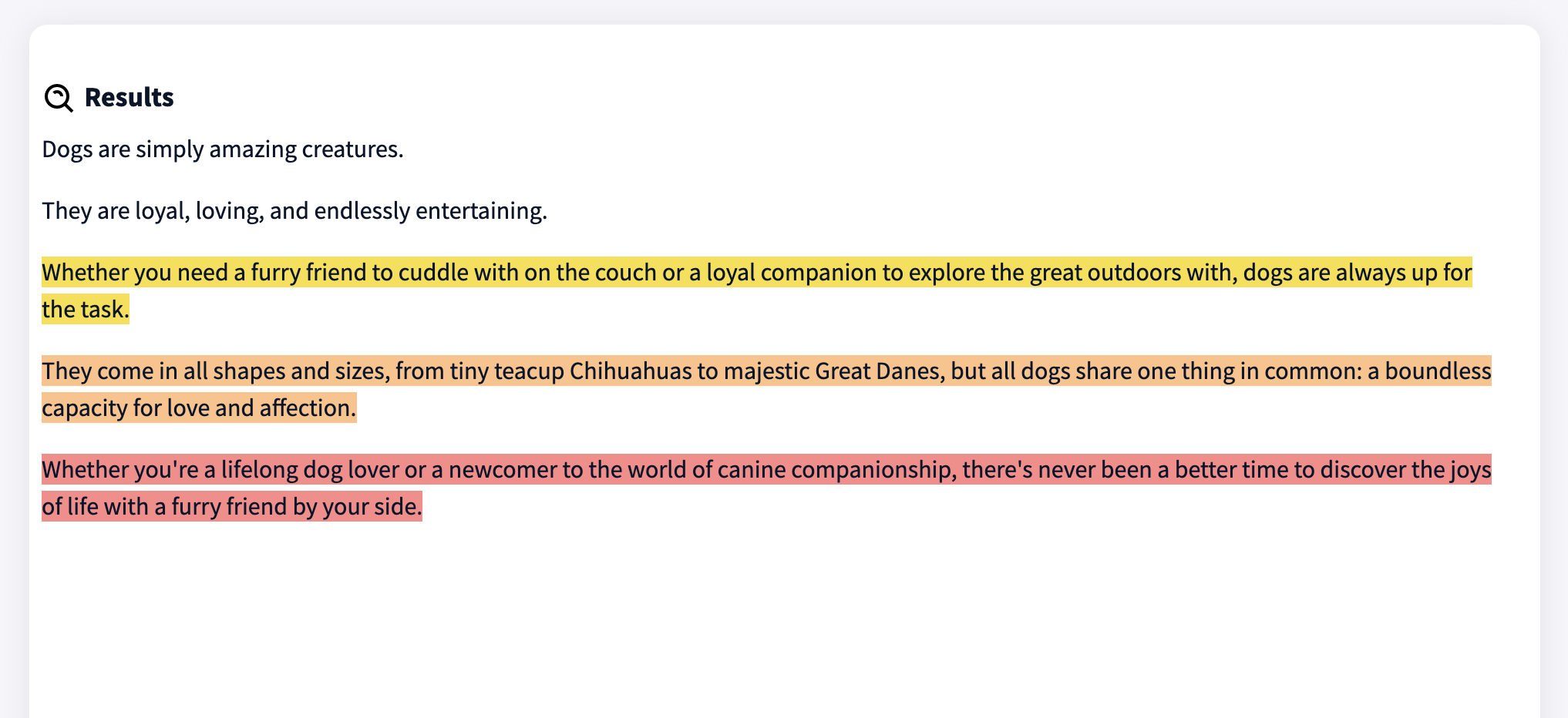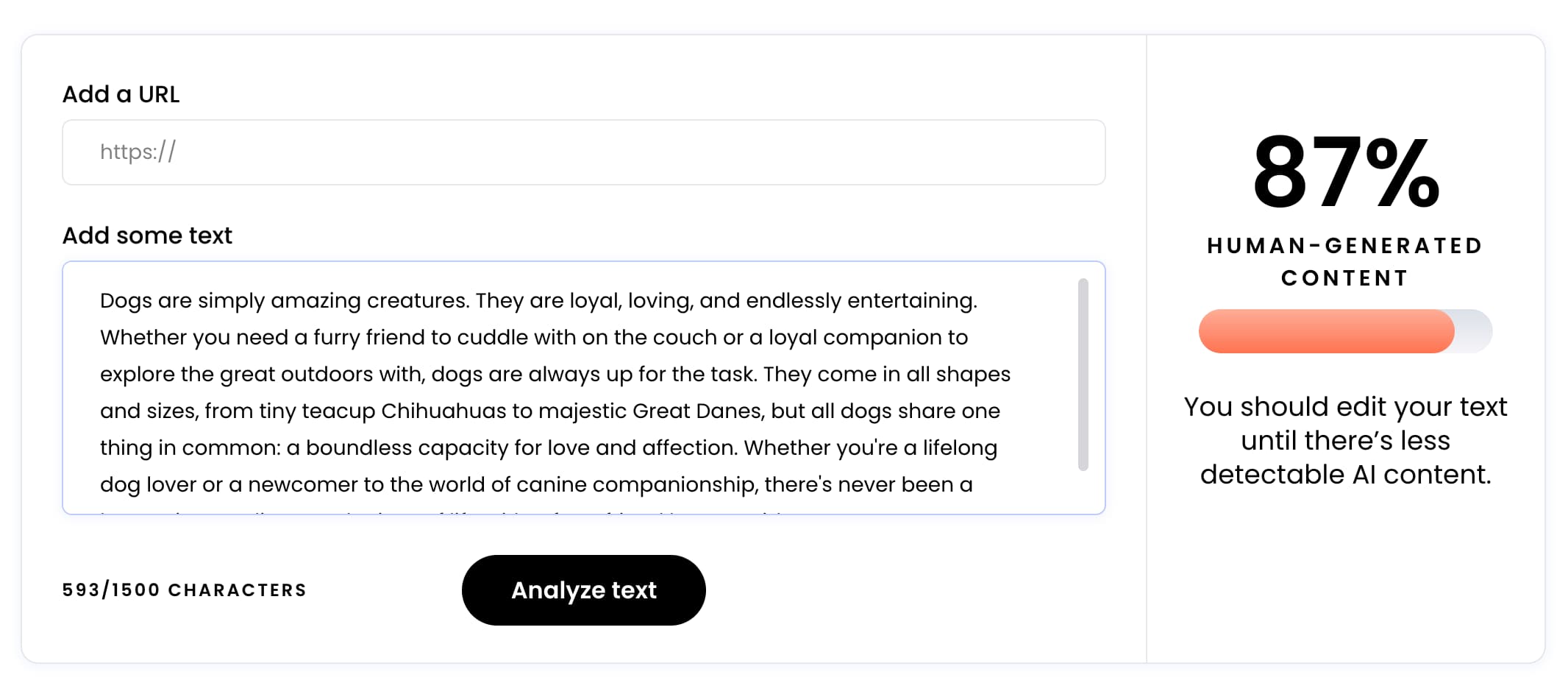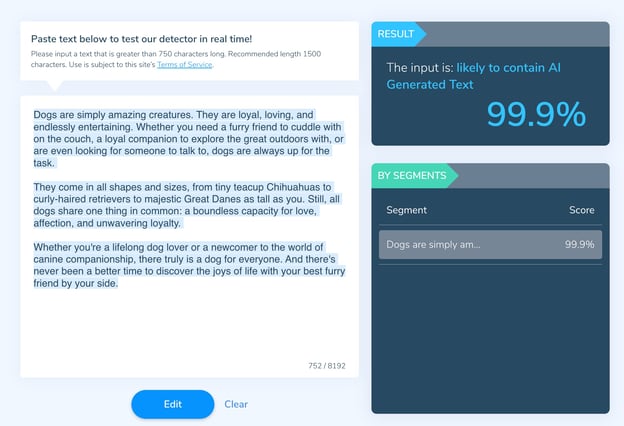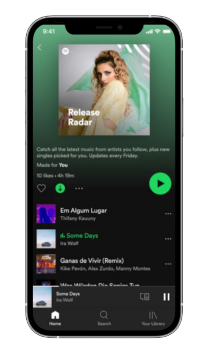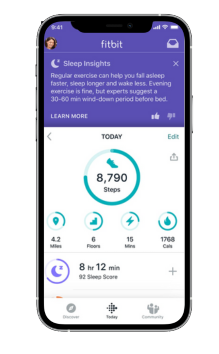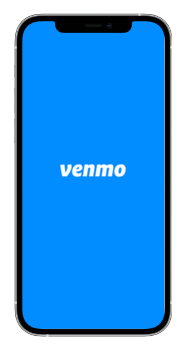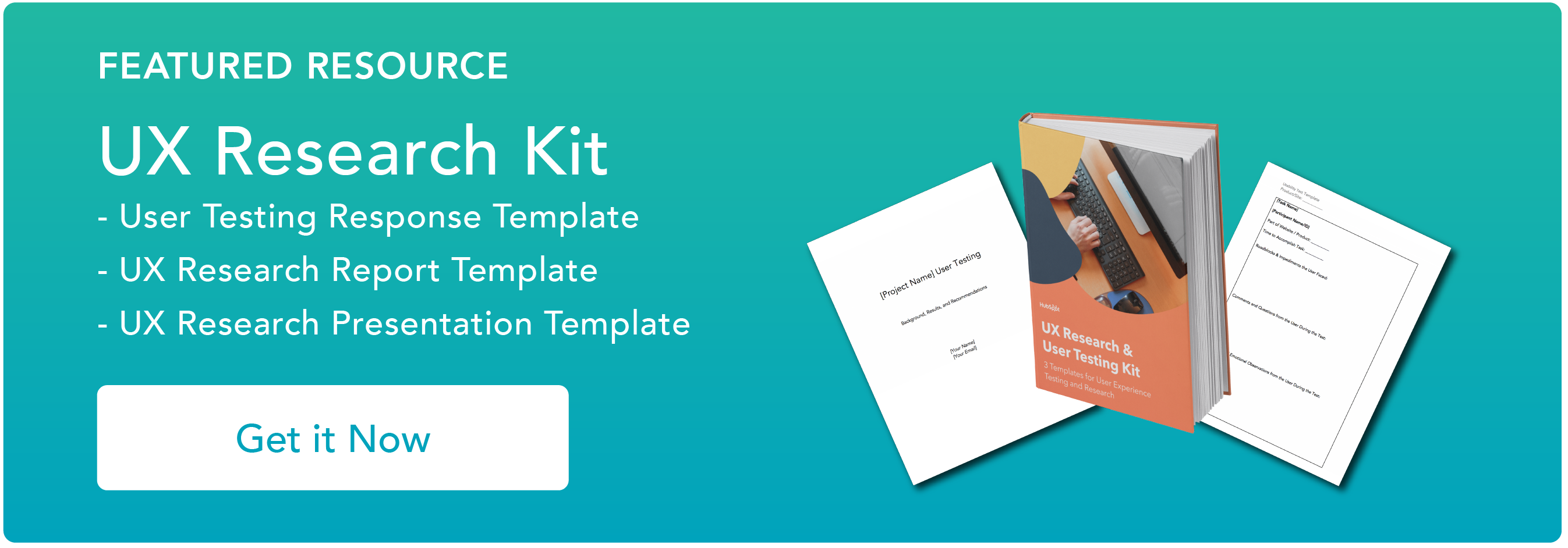Blogs and podcasts are both powerhouse marketing tools. But when comparing blog vs. podcast, which is the better bet for your business?
Podcasts and blogs have the power to nurture customer relationships and deepen brand loyalty. Both highlight authority and expertise. And both forms of content can boost traffic and generate leads.
Each format has benefits and drawbacks, and before launch, you’ll want to know which will offer your business the best ROI.

Let’s take a closer look at blogs and podcasts for content marketing and which is the best for your business. Keep reading, or jump ahead to the section you’re searching for:
Blogs and podcasts have a lot of similarities. They’re both evergreen resources that offer education, insights, and storytelling online.
Both a blog and a podcast can offer marketing opportunities for businesses. And it takes time, dedication, and knowledge to make a blog or podcast that people pay attention to.
The main way these two resources differ is in their format. Blogs are for reading or taking in visual information, while podcasts are for listening.
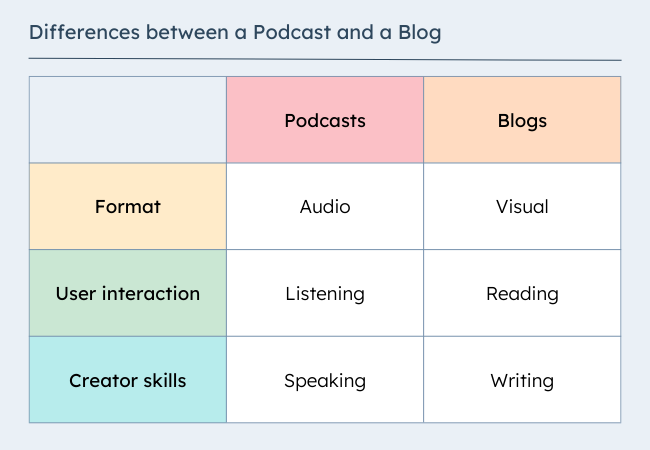
These differences make blogs a useful format for step-by-step instructions, data visualizations, and SEO. Users usually read blogs on desktop and mobile devices. Readers often seek out business blogs when they are trying to solve a specific problem.
At the same time, podcasts are great for interviews, networking, and brand engagement. Users often listen to podcasts when they are doing something else, like driving to work or cleaning the house. Listeners look for business podcasts when they are trying to learn about or keep up with an industry or niche.
As a creator, the main differences between podcasts and blogs are the way they’re made. Blogs need writing, and a lot of it. Editing, visual design, and SEO knowledge are also important skills for aspiring bloggers.
Podcasts require an audio skill set. Podcasters need to be able to speak in an engaging way, whether it’s a solo, two-person, or interview podcast. Sound editing skills are also a must.
Blog vs. Podcast: Which Should You Start First?
Some businesses have the bandwidth to start a blog and a podcast at the same time. That said, most will start these channels one at a time because of the scale of this investment.
This is an important decision with long-term impact. If you’re not sure where to begin, start with five key factors — audience, timing, resources, and cost.
Target Audience
Blog readers, podcast listeners, or both? To decide the ideal medium for your content, get clear about who you want to engage with, what they want to know, and how they access their content.
Your target audience is the group of people you want to reach with your blog or podcast. They’re the consumers who are most important to your business, so you want to create the media they need most.
You may not know who your target audience is. According to 2023 HubSpot research only 42% of marketers know basic demographic information about their target audience.
But if you have the data you need, it’s important to avoid assumptions about who’s reading a blog vs. listening to a podcast.
For example, there’s an assumption that most podcast listeners are young, between 18-34 years old. 2023 data from Edison Research and Amazon Music confirms that 55% of people in this age group listen to podcasts monthly. But it also states that 51% of 35-54-year-olds are listening to podcasts too.
On the flip side, some assume that blogs are for older audiences. But more than 25% of 5 to 18-year-olds in the U.K. are reading blogs online.
Timing
Another factor to consider is your ideal publishing schedule. To create a big enough audience to impact your business, you’ll need to think about the length of your content and how often you release it.
Per BuzzSprout global stats, the majority of podcasts (32%) last 20-40 minutes, and 40% of podcasts publish episodes every 8-14 days.
In comparison, the ideal length of a blog post is 2,100-2,400 words. And it’s recommended that small blogs should post new content 3-4 times per week.
Resources
Both blogs and podcasts need great content and unique branding to stand out.
But if you’re not sure how to start a blog or what it takes to start a podcast, a little research will quickly show you the resources it takes to launch.
For example, a new blog will need a powerful blogging platform, ideally with free hosting.
If you’re starting a podcast you’ll need some equipment to begin, like a quality microphone, headphones, and sound editor. You’ll also need to figure out where you want to host your podcast.
Once that’s all set, the most important resources you’ll need are time and organization. Is organizing your ideas a challenge for you? If the answer is yes, this free editorial calendar template can help you quickly turn your content ideas into a clear plan.
Cost
If you go the DIY route, it’s possible to launch a podcast or blog for little or no cost. But quality matters and the costs of running a blog or podcast can quickly add up.
For example, while the cost of launching a blog can be as little as $50, blogging is a long-term strategy. Even if you love writing, publishing 8,000+ words per week is a tough goal for anyone.
To meet this challenge, many business blogs hire full-time or freelance writers to create blog posts. The average cost for a single blog post is between $50-500. The actual cost will vary depending on the experience and rates of the writers in your niche.
Getting professional podcast production can also be expensive. Rates can run from $15-15,000 per episode depending on the experience of your editor.
Launching a blog or podcast is a big step. If you’ve reviewed the key areas and are still not sure which is the best fit for your business, let’s talk about how each of these content formats can impact your business goals.
Blog vs. Podcast Statistics
2022 HubSpot research shows that both blogs and podcasts hold value for business marketing. 33% of surveyed marketers are using blogs, while 28% are using podcasts and other audio content.
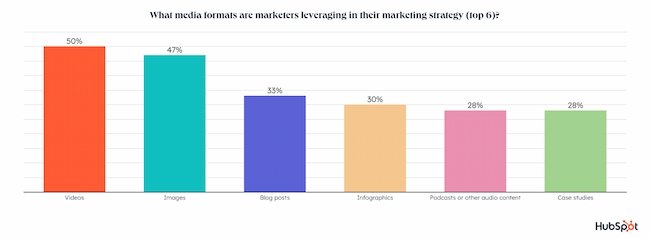
Both channels also hold value for 2023, with 26% of marketers starting a blog for the first time and 24% creating a podcast.
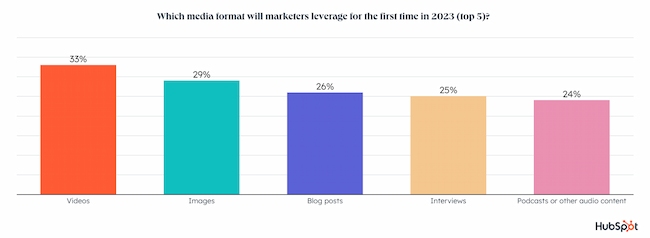
The data above confirms that the choice between a blog and a podcast is a business-specific decision. So, which content format is best for your business? To answer this important question, keep reading.
Why You Should Start a Blog First
Blogging is a powerful way to share product innovation, thought leadership, and educational tips. It’s an outlet to share what your team is passionate about and how you want to make an impact on your customers.
Here are a few other reasons you may want to start a blog before jumping into a podcast:
Blog Reach
The internet has over 600 million blogs (and counting). And HubSpot research says that business websites with blogs get 55% more visitors than sites without blogs.
This impressive reach is part of the reason that blogging is one of the top content strategies for businesses.
SEO
SEO is the practice of developing content to improve search engine rankings. Simply put, a business website with a blog is more likely to get traffic. These are just a few reasons to add a business blog:
- New blog posts give customers more reasons to visit your website
- Blog content can attract people to your site before they become customers
- Blogs ranking on Google can build brand awareness for your business
- Including keywords in authoritative and helpful blog posts can drive traffic to your website
Blog SEO can get the word out about your business, but depending on the scale of your operation, it can take time.
You may want to start a blog first because competition, keyword saturation, and other factors can impact how quickly your blog starts bringing in the traffic you’re looking for.
Blog Brand Awareness
Blogging builds trust and visibility for your brand because it highlights what you know. Blogs are also easy to share, quote, and repurpose. This gives your business more opportunities to gain awareness with viral content.
Blogs are also great brand-builders because they make it easy to highlight your authentic brand voice. You can also use blog content to boost paid advertising and brand content on other platforms, like YouTube videos.
Blog Conversions
Blogs also create a direct path to conversions. Whether you’re hoping to generate qualified leads for your sales team or free trial subscriptions for a SaaS product, a blog can be a big boost.
For example, say your business sells fishing supplies, like handmade flies. Then, you write a blog post with fly fishing tips that soars to the top of the search engine results page. Inside that post is an offer for a free PDF with instructions to make a simple fly for bait.
All someone reading that post has to do is click on the offer. That one click can give your business a lead for follow-ups, and you can send that lead emails about upcoming sales, special offers, and more.
Combining the power of SEO to bring in organic traffic with easy conversion opportunities is what makes a blog so useful for any business.
Keep in mind, once you’ve grabbed attention, it’s important to deliver consistent high-value content. This is what will make your blog a destination for knowledge building, not just a one-time find.
Check out this post for more blogging benefits.
Why You Should Start a Podcast First
Podcasting is a great way to broadcast your brand to an enthusiastic audience. You can use podcast content to connect with complementary brands and influencers and build authority and trust.
Let’s talk about how starting a podcast before a blog could boost your brand.
Podcast Reach
Podcasting gets more popular every year, growing from 65 million U.S. listeners in 2017 to over 140 million listeners in 2022.
And according to 2022 Statista research, 79% of adults in the U.S. are aware of podcasting, up from 22% in 2006.
Networking
Starting a podcast is a great way for businesses to build a network of complementary influencers, partners, and more. Some of the most popular podcasts feature interviews with industry leaders.
Your podcast host or hosts lend a human voice to your brand. Podcasts put a knowledgeable person from your company in conversation with industry experts to tackle current topics and share advice, often with a touch of lighthearted humor. You can also ask your audience what they want you to cover and whether they have questions you can answer.
The interview format makes it easy for your business to connect with important stakeholders. It gives you something valuable to offer new connections while also creating useful content for your audience.
If you are a great podcaster, this opportunity might also lead other podcasts to feature your talent, further increasing your brand reach.
Podcast Brand Awareness
A podcast creates a consistent voice in your audience’s world. If your listener base is consistent, they won’t just recognize your brand name. Instead, your business will become a trusted voice, offering authoritative ideas. This can lead listeners to spread the word about your brand.
The popularity of podcasting has created a persona that organizations like NCS call a “power subscriber” — consumers who subscribe to six or more podcasts. 68% of these subscribers actively buy and seek out the products they hear about during their podcast listening.
Podcast Conversions
While many listeners actively convert after listening to a podcast, the conversion path for this content channel is less direct. Many brands use podcasts to educate users about new products and offers. Then, they add unique tracking codes or URLs to track conversions from podcast episodes.
But people listening to podcasts in their car or on a walk can’t press the CTA button the moment the inspiration hits. Instead, they must choose to return to your website to explore and fill out a form.
Podcasting can influence conversions by increasing brand awareness. But it offers fewer immediate opportunities for leads and sales.
How to Start Your Podcast or Blog Today
Choosing between the two isn’t always necessary. Some companies benefit from offering both. And the two can build on each other if your team has the budget and the time.
Whether you’re starting a blog, a podcast, or both at the same time, there are some tips that can make the process go more smoothly.
Here are the first steps to lay the groundwork for a successful launch.
1. Come up with a unique angle.
Content without a strategy can sink fast. To create a blog or podcast with staying power, you need a great idea — something unique to your business. And it can’t just be a great idea, it has to be an idea that you can consistently explore over time.
To find your unique angle, start with a broad topic. This topic is usually related to your business products and industry. Then, revisit your mission statement. When you look at your topic through the lens of your business vision, you should have a one-of-a-kind angle for your content.
Featured resource: Mission and Vision Statement Templates
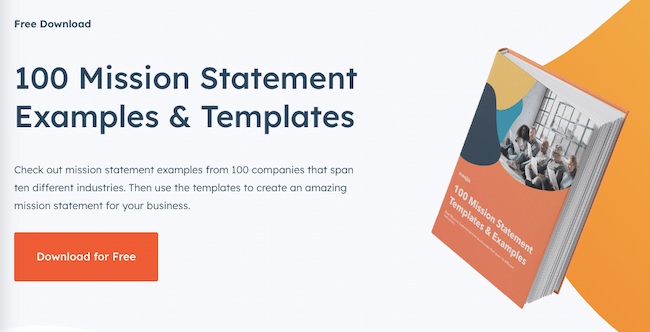
Once you have your angle, make sure your other decisions support that idea. For example, if you’re creating a podcast, use music and sound effects that enhance your distinct vision.
2. Focus on your skills.
Scale matters when it comes to starting a podcast or blog in a saturated market. While some small businesses can create a new team to make their blog or podcast a success, many will need to start with the team they already have, even if it’s a team of one.
This means being honest about your likes, dislikes, and what you can commit to long-term.
For example, say you love chatting with clients and colleagues and have a hard time sitting in front of a computer for too long. It may make more business sense to start a blog, but you’re more likely to create a great podcast and stick with it.
3. Assess your marketing team.
Has someone been pushing your company to create a blog and tossing topic ideas your way for the past year? Maybe they’ve even been writing shorter posts for LinkedIn already.
Is there someone on your team who devours podcasts? Or someone who knows podcasts in your industry and understands what works and what doesn’t?
Before you begin building your podcast or blog, find the knowledgeable and passionate marketers on your team who may want to get involved. This one step can make blogs and podcasts more manageable with a better chance of success.
4. Get to know your competition.
You need to know what’s out there so you don’t churn out content that your audience has already seen. Begin with some competitive analysis to figure out if your idea is enough to stand out.
Featured resource: Competitive Analysis Templates
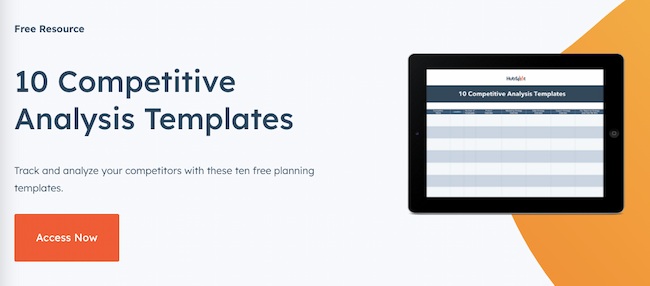
Then, dig into the details of your unique blog or podcast. Research long-tail keywords to help you brainstorm niche topics that separate you from the pack on both platforms.
Podcast enthusiasts: Do some research into podcast SEO to help your podcast surface on popular podcast platforms like Spotify, Apple Podcasts, and more.
5. Find the right tools.
Content is fun to create, but it takes attention to detail for it to make a difference for your business. One way to make the content creation process more effective is by choosing the right tools.
Blogging Tools
Tools for blogging that can help you make it happen include:
These tools can help you add a blog to your website. They make it easier to focus on building a content calendar, targeting the right audience, and creating the best content.
For example, an AI content assistant can also help you quickly create outlines and draft copy to speed up the writing process.
Check out this post for more blogging tools.
Podcasting Tools
Podcast tools can help you streamline production and releases. And audio equipment like microphones and headphones aren’t the only tools you’ll need for podcasting.
Online tools for your new podcast include:
- Recording software
- Audio editing software
- Podcast hosting
As your podcast grows, you may want to look into more advanced tools to promote your podcast and improve lead conversion.
For example, Casted offers a podcast marketing platform that integrates with a company’s existing customer relationship management (CRM) and content management system (CMS) tools.
HubSpot customers: The Casted integration connects podcast listening data to your CRM. This lets you see what your contacts are listening to and what they click.
6. Prepare, prepare, prepare.
There are great resources for how to launch a blog or start a podcast. But once that exciting flurry of activity is complete, the work has only just begun.
For a blog or podcast to make a difference for your business, you need to prepare to make every post and broadcast great. When you’re writing a blog, this might mean drafting a clear outline, doing time-consuming research, or fact-checking. If you’re preparing for a podcast, it might be a warm-up routine, sound checks, or learning about volume levels.
The more you prepare for each blog and podcast, the more likely you are to create a trustworthy resource that your audience loves.
7. Create value.
37% of podcast listeners in the U.S. hear about new podcasts from friends, family, and coworkers.
The best way to get that word-of-mouth endorsement is to create content that people need and want.
This means your content should be both useful and engaging to your audience. As you grow, ask for audience feedback and respond to both positive and negative comments. Set clear expectations and be sure to consistently meet them. Finally, give your audience ways to engage and find ways to reward them for that engagement.
Which is better, a blog or a podcast?
Both blogs and podcasts can increase your marketing reach and nurture customer relationships.
Choose the strategy that makes the most sense for your company, your in-house talent, and your customers, and you’ll see winning results.
Editor’s note: This post was originally published in November 2020 and has been updated for comprehensiveness.



![]()



![Free Guide: How to Use AI in Content Marketing [Download Now]](https://i4lead.com/wp-content/uploads/2023/04/3e25e192-30c3-40c1-a7da-a4d054c9e157-5.png)









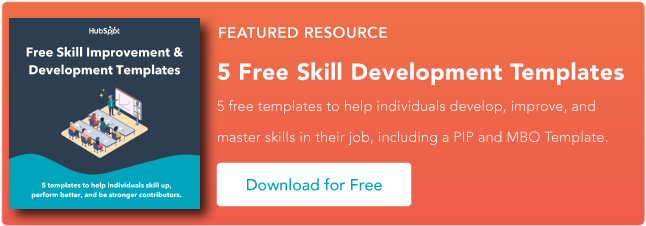
![Free Guide: How to Use AI in Content Marketing [Download Now]](https://i4lead.com/wp-content/uploads/2023/04/3e25e192-30c3-40c1-a7da-a4d054c9e157-4.png)
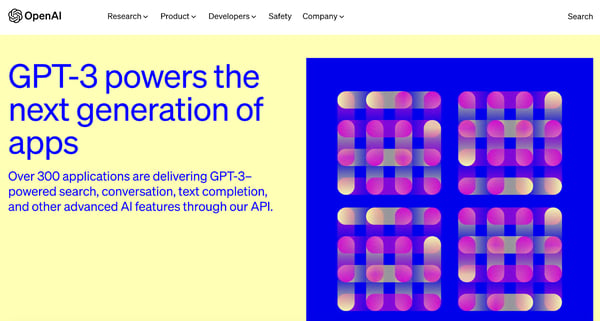
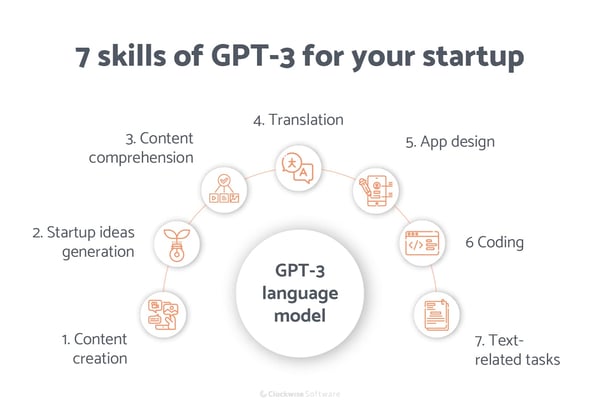
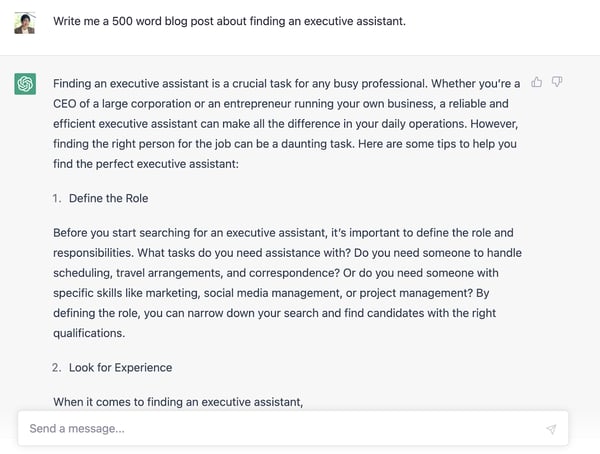




![Download Now: The State of U.S. Consumer Trends [Free Report]](https://i4lead.com/wp-content/uploads/2023/04/ebf9ec8e-a468-455a-943e-80aa4e6be694-3.png)








![Free Guide: How to Use AI in Content Marketing [Download Now]](https://i4lead.com/wp-content/uploads/2023/04/3e25e192-30c3-40c1-a7da-a4d054c9e157-3.png)
